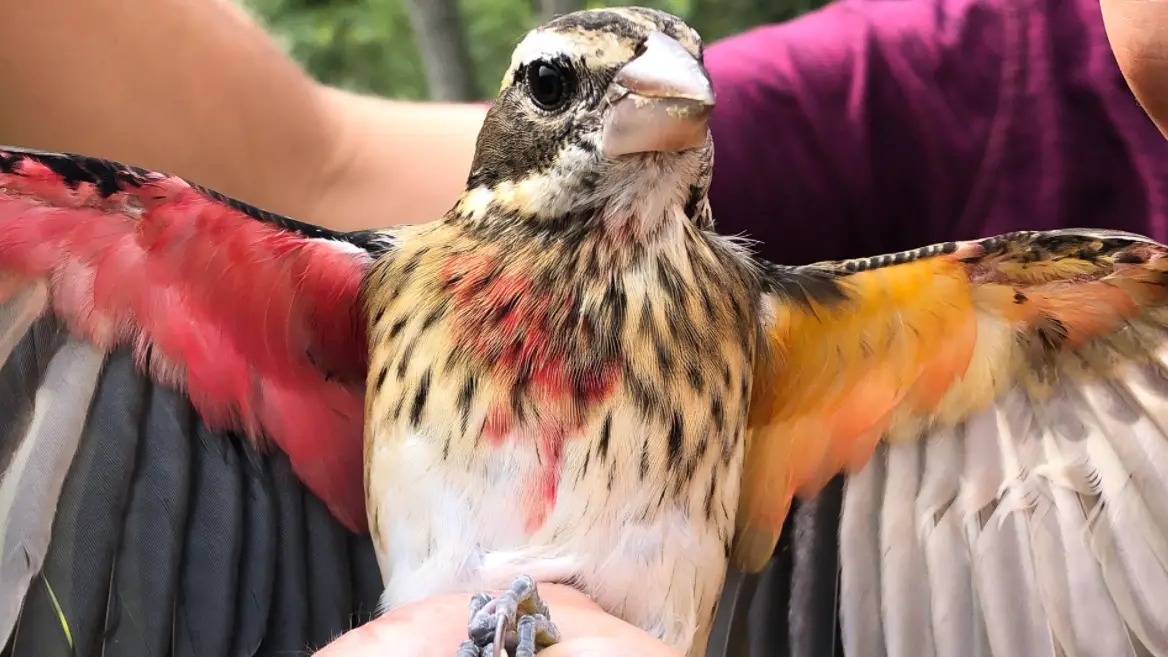Extremely Rare Male-Female Combination Bird Found In Pennsylvania
Tags: News

A remarkable bird exhibiting both male and female plumage has been getting avian fanatics in Pennsylvania rather excited.
The species involved is a rose-breasted grosbeak (Pheucticus ludovicianus).
The bird was discovered by researchers at Powdermill Nature Reserve. Scientists at the Carnegie Museum of Natural History’s environmental research center in Rector, PA, are not entirely sure of the reason for the strange phenomenon but believe it likely to be a genetic anomaly known as bilateral gynandromorphy.
True hermaphroditism refers to an animal possessing both male and female reproductive organs. But in the case of gynandromorphs, its the contrasting external characteristics of both male and female which are on display.
In the instance of this rose-breasted grosbeak, the bird is literally split down the middle in terms of the opposing male and female coloring.
Inside the bird’s left wing is the brown/ yellow color of a female. The inner right wing is colored reddish-pink, as is expected from the male version of this species.
The back of the wings as well as its tail feathers also bare contrasting colors – the left side is more of a brown color, while the right side is black.
Ornithologists having been tagging birds at the Powdermill Nature Reserve in Pennsylvania since 1962. In that time they have banded roughly 13,000 birds a year. And in that period less than 10 bilateral gynandromorphs have been found.
The previous discovery came back in 2005 and was also a rose-breasted grosbeak which had one pink under-wing and one yellow.
Hey, are you on Instagram? Check out the official Truth Theory Instagram page HERE, we upload new content every day.
One of the researchers compared the find to ‘seeing a unicorn’.
This strange phenomenon has also been reported in other creatures, including crustaceans, reptiles and butterflies.
This gynandromorph may be able to produce offspring
In the Pennsylvania bird’s case, the scientists believe that it may possibly be able to produce offspring.
“Since usually only the left ovary is functional in birds, and the left side of this bird is the female side, this bird theoretically could produce young if it successfully mates with a male,” read part of their report.
https://www.facebook.com/PowdermillNatureReserve/posts/3156596877772436
A functioning left ovary alone may not however be enough for this bird to mate. That’s because grosbeaks are songbirds and it’s unknown whether it will possess the correct song to attract a mate.
A few years ago, there was a case of bilateral gynandromorphy occurrence in another species, the Eastern Towhee, which was reported to have been singing and feeding young chicks.
Read more: Study Finds That Watching Cute Animal Clips Is Good For You
IMAGE FEATURED: ANNIE LINDSAY
Leave Comment: